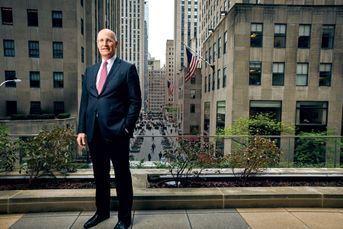Dead banks walking: Where will the $75B in capital come from?
For cryin’ out loud, let's just admit that many of the big banks are zombies.
The results of the government’s much-ballyhooed bank stress tests are now in: Ten big banks are OK and seven need $75 billion to cushion them from future economic shocks.
So now what?
Some of the banks, just like any other business, will attract capital from private investors who believe the potential rewards outweigh the risks. But some banks won’t be attractive. Does that mean more government bailouts?
For cryin’ out loud, let’s just admit that many of the big banks are zombies.
Their assets are dominated by real estate loans and mortgage-related securities whose value is only a fraction of their face value — and still largely undetermined, even after all these months of government intervention.
Maybe if we continue to act like proper Victorians and avert our eyes from the unpleasantness, these ailing banks will be OK.
But how often does real life turn out like “Masterpiece Theatre? “
Maybe it’s fear of the public’s reaction, or that the mildly reviving economy would dive or that America would lose its international standing, but for whatever reason, the government won’t admit that many banks are effectively bankrupt.
I say, get the alcohol and bandages ready — along with a big FDIC checkbook — and let’s lance the bad-bank boil.
After making sure that all depositors are protected to the limits of deposit insurance, let the zombie banks officially go bust and allow market forces to reprice the assets on the banks’ books.
Will that process yield 70 cents on the dollar? Twenty-five cents? Half a buck?
Who knows.
But until the market goes to work on those stricken assets, the affected banks won’t have transparent and credible balance sheets and they won’t be able to start lending.
And if many of the giant banks don’t survive — so what!
In their current form, many of the giants are bureaucratic bumblers. Not to pick on any one of them, but wasn’t Bank of America a financial Byzantium even before it swallowed the unwieldy behemoth that was Merrill Lynch? Why should anyone believe that the addition of capital will make any of these creaky contraptions run any better?
The government’s goal, of course, isn’t to make banks run efficiently. They could be as bumblng as the Bulgarian motor vehicle department for all the feds care.
The tinkering and capital transfusions are intended to get credit moving again, but, in fact, we don’t need interstate colossi to achieve that goal — strong local and regional banks can serve our nation’s credit needs effectively and profitably, along with sound national banks that are not in every business line under the sun.
Look at it this way: Would you rather trust several thousand healthy banks to make decisions about extending credit, or a dozen bank CEOs who are hooked on billions in taxpayer money because they are deemed too big to fail?
Learn more about reprints and licensing for this article.







